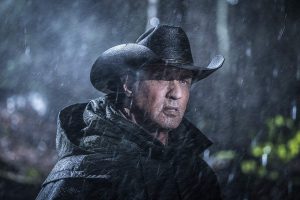The opening of Martin Scorsese’s Silence is bleak, blunt, and harsh: a plain-text title slide cuts directly to a foggy image of a man standing beside a pair of severed heads, faces still twisted in pain. The following scene is a graphic depiction of early 17th-century Japanese torture, as officials pour boiling water over a group of Japanese Christians as a Portuguese missionary, Father Ferreira (Liam Neeson), is forced to stand and watch.
The mood set by these scenes prevail for the majority of the nearly three-hour film, based on the renowned novel of the same title by Shusaku Endo.
Setting and maintaining this grim mood is one of the great strengths of the movie, which tells the story of two Christian missionaries from Portugal, Father Sabastiãon Rodrigues (Andrew Garfield) and Farther Francisco Garrpe (Adam Driver), who travel to Japan at the peak of Christian persecution in search of their beloved Father Ferreira, who was said to have apostatized, or denied his faith in public, during his own mission. As the story progresses, Father Rodrigues finds himself in desperation as he experiences the absolute silence of God—and Scorsese’s film is dedicated to explaining that silence.
Cinematography (by Rodrigo Prieto and Michael Ballhaus) and lighting expertly communicate the priest’s thoughts and emotions, independent of the verbal cues. In the confusion of a strange new city, the camera swivels rapidly, illustrating the missionary’s struggle to take it all in. The majority of the movie is dominated by grey clouds and cold rain, with little sound besides the exaggerated echoes of raindrops and footsteps, which amplify the stark quietude. The sun breaks through during the rare moments in which Fr. Rodrigues has a glimmer of hope or is able to perform his priestly duties; however, there is always a quick return to the grey tones and ominous silence.
At times, scene transitions are sudden and choppy, making it seem as though there are gaps in the story, though this may be to mimic the sharp transitions among topics in the letter in which Fr. Rodrigues narrates his treacherous journey.
In contrast, other scenes seem to drag on forever: the scenes of struggling, suffering, and dying. Often, it becomes painful to watch. This is completely intentional. These are the moments and images that persistently haunt Fr. Rodrigues, the endless suffering through which God seems to remain silent. This suffering makes Fr. Rodrigues question everything he has ever believed in. The focus on such dreary images is part of what makes Silence a cinematic masterpiece. The film perfectly emulates the emotions of Endo’s novel, setting the critical foundation for conveying Endo’s message that faith may persist without institutional religion.
The film is not without its failures, such as excessive cleanliness (even alongside the torture) throughout the movie (for starters, why does Fr. Rodrigues still have neatly styled hair after weeks of hiding in the mountains?). The most tragic flaw, however, is the omission of Fr. Garrpe’s famous “Lord, hear our prayer” during his most defining moment as a character. Instead, the shocking, disheartening scene plays out in near silence, as Fr. Garrpe visibly utters something inaudible. This is consistent with the silence that permeates most tragic scenes in the film, but the silence would have been sharper if coupled with Fr. Garrpe’s unanswered cry.
A more forgivable omission takes place early on: the movie passes over the storm the two priests endure on their voyage from Macao to Japan, and subsequently skips over the defining Latin prayer words mumbled by a Japanese man named Kichijiro (Yōsuke Kubozuka). Fr. Rodrigues believes Kichijiro is a coward for his repeated apostasy and betrayal, and Kichijiro’s omitted prayer words generate the priest’s initial confusion over whether a Christian may possess such qualities. However, Yōsuke Kubozuka fully compensates for this omission with his brilliant portrayal of the emotional nuances of the story’s most complex and intriguing character, from the variant forms of fear, shame, pride, and humility Kichijiro demonstrates as he undergoes an intriguing transformation.
Andrew Garfield’s performance was less notable, and certainly not as compelling as the performances of the actors whose characters challenge Garfield’s, including Christians such as Kichijiro, and Japanese officials such as Inoue (Issey Ogata) and the Interpreter (Tadanobu Asano). In some ways, Garfield’s weak character portrayal stresses Fr. Rodrigues’ doubt and confusion, even enabling viewers to place themselves in the priest’s position and ponder their own emotional responses to the events unfolding in the film. Highlighted by the contrast, Inoue and the Interpreter are more deeply defined as characters, with sly, mocking voices that add to the priest’s psychological torment.
Silence is not a film suited for entertainment, nor was that the intention. Conversely, Silence demands a great deal from the audience, as viewers are forced to endure painful, sometimes tedious and graphic scenes, face stark truths, and answer timeless, grueling questions regarding faith, courage, religion, and God. Much like Fr. Rodrigues, viewers embark on an emotionally trying journey when they sit down to watch Silence. For the viewer willing to have the courage to question and think deeply, the result of the journey is well worth it. Scorsese’s Silence is inspirational regardless of the viewer’s beliefs upon entry, carrying Endo’s original message on the transcendence of faith in the greatest capacity that a film can muster.





